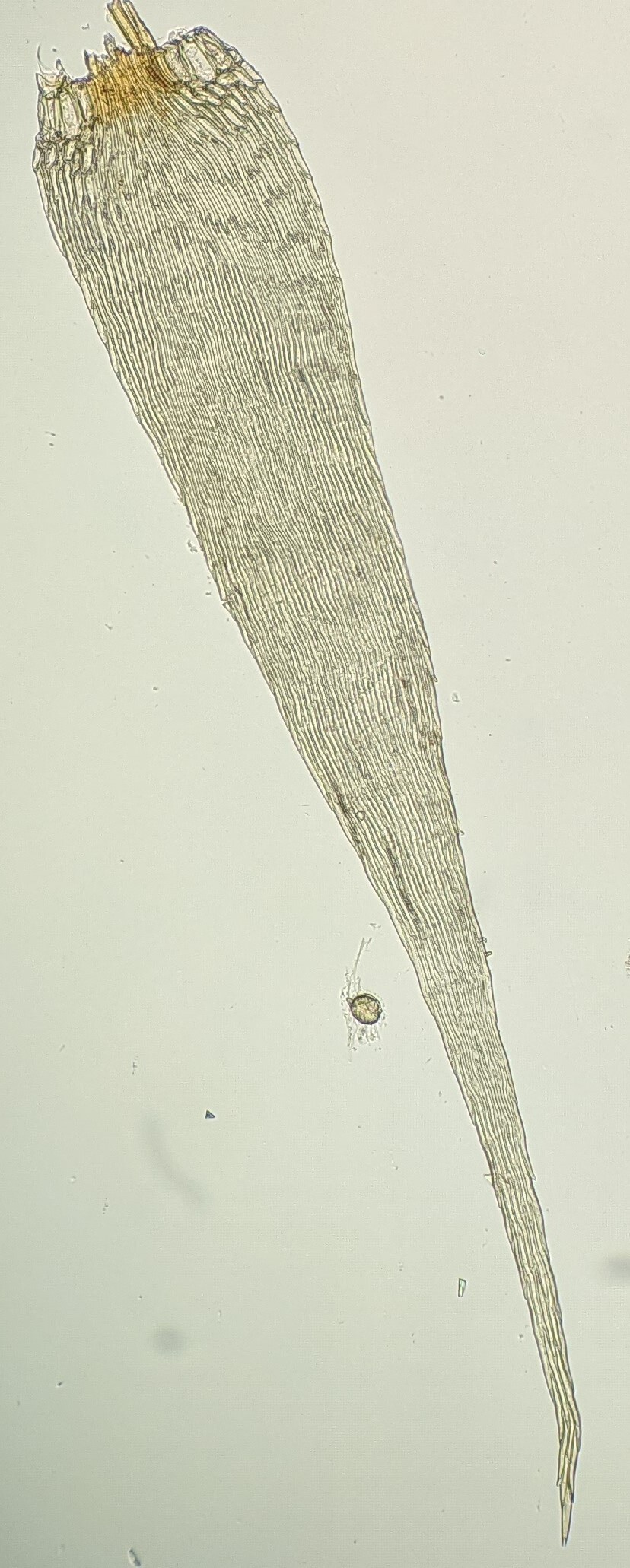Rhaphidorrhynchium amoenum
(Hedw.) M.Fleisch.Autoicous. Asexual propagules absent. Dense tufts on logs, occasionally rocks and tree trunks and branches, yellow-brown to yellow-green. Stems 1–5 cm long, richly subpinnately branched, brown, with sparse red-brown rhizoids. Leaves decurved and falcate or circinate, ovate-lanceolate, 0.9–1.5 mm long, 0.15–0.4 mm wide, concave, channelled near apex, strongly flexuose or falcate-secund when dry; apex acuminate; margins entire or finely denticulate near apex, plane, without a border; cells linear 35–93 μm long, 4–7 μm wide; alar cells abruptly differentiated, 2–4 in angles, strongly inflated, oblong, 27–70 μm long, 12–25 μm wide, hyaline or weakly pigmented. Setae 5–20 mm long, red-brown, smooth. Capsules ovoid to cylindric, inclined to pendent, ±straight, 0.6–1.25 mm long. Operculum rostrate from conic base, 0.7–1 mm long.
GleP, VVP, GipP, CVU, GGr, DunT, EGL, EGU, WPro, HSF, HNF, OtR, Strz, HFE, VAlp. Widespread along and south of the Great Dividing Range in a variety of habitats including rainforests, sclerophyll forests and cave entrances. Also WA, QLD, NSW, ACT and Tas. New Zealand, southern Chile and Argentina.
 Spinning
Spinning


